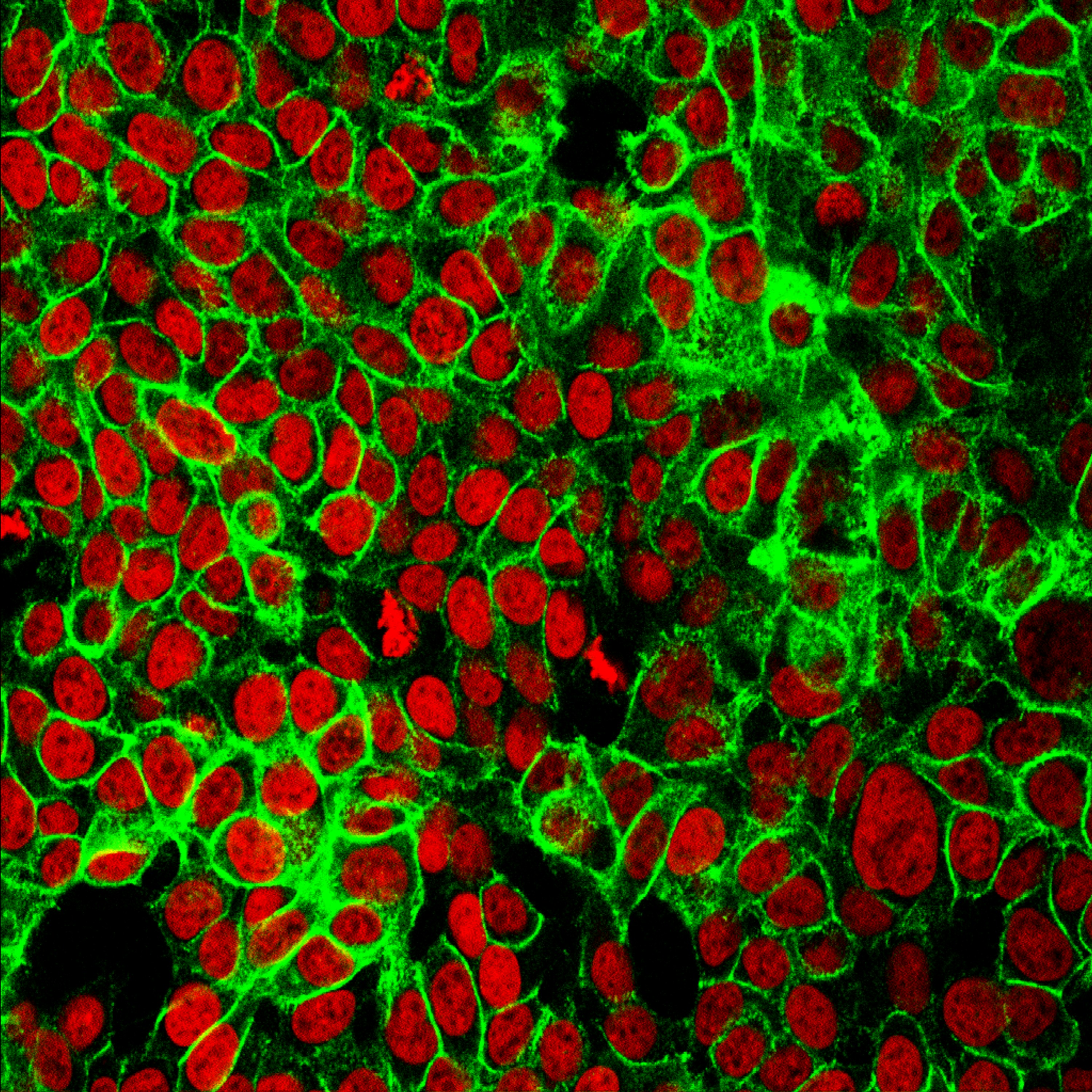Today, we're going to talk about a topic that may not be on everyone's daily conversation list, but is undoubtedly important for men's health: the size of the prostate. You might be wondering, what is considered a normal size for this peculiar organ? Well, buckle up and get ready to discover some fascinating facts about the normal size of the prostate and why it matters for your overall well-being. So, grab a cup of tea and let's dive into the world of prostate health!
Understanding the Prostate
The prostate is an important gland in the male reproductive system. It plays a vital role in the production and transport of semen. Understanding the prostate and its functions is essential for maintaining good prostate health.
Definition and Function of the Prostate
The prostate is a walnut-sized gland located just below the bladder and in front of the rectum. Its primary function is to produce and secrete a fluid that nourishes and protects sperm cells. This fluid, along with sperm cells from the testicles, makes up semen.
Location and Size of the Prostate
The prostate is situated in a strategic position within the male anatomy. It surrounds the urethra, which is the tube responsible for carrying urine from the bladder, as well as semen during ejaculation. Due to its location, any changes in the size of the prostate can potentially affect urinary and sexual functions.
In terms of size, the prostate can vary from person to person. On average, it measures about 3-4 centimeters in length and weighs approximately 20 grams. However, it is important to note that prostate size can change throughout a man's lifetime.
Variation in Prostate Size
It is normal for the size of the prostate to change as a man ages. In general, the prostate tends to grow larger with age. This growth is known as benign prostatic hyperplasia (BPH) and is a natural part of the aging process. However, not all men will experience significant growth, and the rate at which the prostate enlarges can vary.
Determining the Normal Size of the Prostate
Understanding what is considered a normal size for the prostate is crucial for identifying potential health issues. While there are general norms for prostate size, it is essential to consider individual variations and factors that can affect prostate size.
General Norms for Prostate Size
As mentioned earlier, the average length of the prostate is around 3-4 centimeters. Additionally, a weight of approximately 20 grams is considered within the normal range. However, it is essential to note that these measurements can vary slightly depending on the source and individual characteristics.
Factors Affecting Prostate Size
Various factors can influence the size of the prostate. Age, hormonal changes, genetics, and overall health can all play a role in prostate size. Hormones like testosterone and estrogen, for example, have an impact on prostate development and growth. Additionally, certain medical conditions and lifestyle factors, such as obesity, can also affect prostate size.
Effects of Age on Prostate Size
Age is a significant factor in prostate size. As men get older, their prostate gland tends to gradually increase in size. This growth is generally attributed to hormonal changes, particularly the increase in dihydrotestosterone (DHT) levels. Age-related changes in the prostate can sometimes lead to conditions like benign prostatic hyperplasia (BPH) or prostate cancer.
Measurement of Prostate Size
Accurately measuring the size of the prostate is crucial for diagnosing and monitoring prostate health. There are several methods available for measuring prostate size, ranging from physical exams to advanced imaging techniques.
Physical Exam
During a physical examination, a healthcare professional can evaluate the size of the prostate by inserting a gloved and lubricated finger into the rectum. This procedure, known as a digital rectal examination (DRE), allows the healthcare provider to assess the size and condition of the prostate and check for any abnormalities.
Prostate-specific antigen (PSA) Test
The prostate-specific antigen (PSA) test is a blood test that measures the levels of PSA in the bloodstream. PSA is a protein produced by the prostate gland, and elevated levels may indicate prostate abnormalities, including prostate enlargement or prostate cancer. While the PSA test does not directly measure prostate size, it is commonly used as an initial screening tool.
Trans-rectal Ultrasound
Trans-rectal ultrasound (TRUS) is a non-invasive imaging technique that uses sound waves to create detailed images of the prostate. During the procedure, a small probe is inserted into the rectum, and the sound waves bounce back to create a visual representation of the prostate. TRUS can provide accurate measurements of the prostate's size and reveal any abnormalities, such as tumors or cysts.
Magnetic Resonance Imaging (MRI)
Magnetic resonance imaging (MRI) is a powerful imaging tool that uses magnetic fields and radio waves to generate detailed images of the prostate. MRI can provide a highly accurate assessment of prostate size and detect any abnormalities with greater clarity than other imaging methods. This technique is especially useful when evaluating the extent and location of prostate tumors.
Effects of Prostate Size on Health
The size of the prostate can have a significant impact on overall health, particularly in relation to urinary and sexual functions. Understanding these effects is essential for diagnosing and managing prostate-related conditions.
Influence on Urinary Function
Changes in prostate size can affect the normal flow of urine through the urethra. If the prostate becomes enlarged, it can narrow the urethral opening, leading to urinary symptoms such as frequent urination, weak urine flow, difficulty starting or stopping urination, and the sensation of incomplete emptying of the bladder. These symptoms are commonly associated with conditions like benign prostatic hyperplasia (BPH).
Influence on Sexual Function
The proximity of the prostate to key structures involved in sexual function, such as the urethra and nerves, means that changes in prostate size can impact sexual health. Depending on the size and condition of the prostate, individuals may experience difficulties in achieving or maintaining an erection, decreased sexual desire, or ejaculatory problems. These issues can have a significant emotional and psychological impact on individuals and their relationships.
Can Size Predict Health Issues?
While there may be certain associations between prostate size and health issues, it is important to note that size alone does not determine the presence or severity of a condition. An enlarged prostate, for example, does not automatically indicate prostate cancer. Diagnostic tests, medical history, and other factors need to be considered in conjunction with prostate size to determine the appropriate diagnosis and treatment.

Prostatitis and Prostate Size
Prostatitis is the inflammation of the prostate gland, typically resulting from an infection. It can affect prostate size and lead to a range of uncomfortable symptoms. Understanding the relationship between prostatitis and prostate size is essential for effective diagnosis and treatment.
Definition and Causes of Prostatitis
Prostatitis is a condition characterized by inflammation and swelling in the prostate gland. It can be caused by a bacterial infection, non-bacterial inflammation, or in some cases, be of unknown origin. Common causes of prostatitis include urinary tract infections, sexually transmitted infections, and certain medical procedures.
How Prostatitis Affects Prostate Size
Inflammation and swelling associated with prostatitis can cause the prostate to become enlarged. This increase in size can result in urinary symptoms similar to those seen in benign prostatic hyperplasia (BPH), including increased frequency and urgency of urination, pain or discomfort during urination, and pelvic pain. It is important to note that prostate size may return to normal once the underlying inflammation is treated.
Treatment of Prostatitis
The treatment of prostatitis depends on the underlying cause of the inflammation. Bacterial prostatitis is typically treated with a course of antibiotics to eliminate the infection. Non-bacterial prostatitis may require anti-inflammatory medications to reduce swelling and alleviate symptoms. Other approaches, such as warm sitz baths, lifestyle modifications, and prostate massage, can also provide relief.
Prostate Hyperplasia and Prostate Size
Benign prostatic hyperplasia (BPH) is a common condition characterized by the non-cancerous enlargement of the prostate gland. It can have a significant impact on prostate size and urinary function.
Definition and Causes of Prostate Hyperplasia
Prostate hyperplasia refers to the abnormal growth of prostate cells, resulting in an enlarged prostate gland. The exact cause of BPH is still not entirely understood, but hormonal imbalances, particularly the increase in dihydrotestosterone (DHT) levels, are believed to play a role. Age is also a significant risk factor, with BPH becoming more prevalent as men get older.
How Prostate Hyperplasia Affects Prostate Size
The abnormal growth of prostate cells associated with BPH leads to an increase in the size of the prostate gland. As the prostate enlarges, it can put pressure on the urethra, causing urinary symptoms such as frequent urination, weak urine flow, and difficulty emptying the bladder completely. The degree of prostate enlargement varies among individuals and can range from mild to severe.
Treatment of Prostate Hyperplasia
Treatment options for prostate hyperplasia depend on the severity of symptoms and their impact on daily life. Mild cases may only require lifestyle modifications such as avoiding caffeine and alcohol, practicing timed voiding, and managing fluid intake. Medications that help relax the prostate gland muscles and shrink the prostate may be prescribed for more moderate cases. In severe cases, surgical interventions like transurethral resection of the prostate (TURP) or laser ablation may be necessary.
Prostate Cancer and Prostate Size
Prostate cancer is a serious condition characterized by the uncontrolled growth of abnormal cells in the prostate gland. While prostate size may be affected by the presence of cancer, it is not an accurate predictor of the disease.
Definition and Causes of Prostate Cancer
Prostate cancer occurs when the cells in the prostate gland mutate and multiply rapidly, forming a malignant tumor. The exact causes of prostate cancer are still not fully understood, but age, family history, and certain genetic and environmental factors are known to increase the risk. It is crucial for individuals to undergo regular screenings, such as the PSA test and DRE, to detect prostate cancer in its early stages.
How Prostate Cancer Affects Prostate Size
Prostate cancer can cause the prostate to become larger due to the abnormal growth of cancerous cells. However, it is important to note that not all individuals with prostate cancer will have an enlarged prostate, and vice versa. Some cases of prostate cancer may remain localized within the prostate gland without causing significant enlargement, while others may result in both enlargement and cancerous growth.
Treatment of Prostate Cancer
Treatment options for prostate cancer depend on various factors, including the stage of cancer, the individual's age and overall health, and personal preferences. Treatment may involve active surveillance, where the cancer is monitored closely without immediate intervention, or interventions such as surgery, radiation therapy, hormone therapy, or chemotherapy. The choice of treatment is individualized and should be discussed with a healthcare professional who specializes in the management of prostate cancer.
Reducing Prostate Size Naturally
Maintaining a healthy prostate is essential for overall well-being. While there are no guaranteed ways to reduce prostate size naturally, certain lifestyle changes and herbal supplements may help promote prostate health.
Dietary Changes
A healthy diet rich in fruits, vegetables, whole grains, and lean protein is beneficial for prostate health. Foods that are high in antioxidants, such as tomatoes, berries, and green leafy vegetables, may help reduce inflammation within the prostate. Including omega-3 fatty acids found in fatty fish, flaxseeds, and walnuts in the diet may also have a positive impact on prostate health.
Exercise
Regular physical activity has been associated with a reduced risk of developing prostate-related conditions. Engaging in moderate-intensity exercises for at least 150 minutes per week, such as brisk walking, swimming, or cycling, can help maintain a healthy weight and promote overall prostate health. It is important to consult with a healthcare professional before starting any exercise regimen.
Stress Management
Chronic stress can have a negative impact on prostate health. Engaging in stress-management techniques such as meditation, deep breathing exercises, or yoga can help reduce stress levels and promote relaxation. Maintaining a healthy work-life balance and engaging in activities that bring joy and fulfillment can also contribute to overall well-being.
Herbal Supplements and Remedies
Certain herbal supplements and remedies have been traditionally used to support prostate health. Saw palmetto, pygeum africanum, stinging nettle, and beta-sitosterol are examples of natural substances that have been studied for their potential benefits in reducing prostate size or alleviating associated symptoms. It is important to speak with a healthcare professional before starting any herbal supplementation to ensure safety and effectiveness.
Medical Interventions to Reduce Prostate Size
In cases where natural approaches are not effective or symptoms are severe, medical interventions may be necessary to reduce prostate size.
Medications
Various medications are available to manage prostate-related conditions and reduce prostate size. Alpha-blockers, 5-alpha reductase inhibitors, and combination medications may be prescribed to relieve symptoms associated with benign prostatic hyperplasia (BPH) by relaxing prostate gland muscles or blocking the production of hormones that contribute to prostate growth. It is important to follow the prescribed dosage and consult with a healthcare professional regarding any potential side effects.
Surgery
Surgical interventions may be recommended for individuals with severe prostate enlargement or prostate cancer. Transurethral resection of the prostate (TURP) is a common surgical procedure that involves removing excess prostate tissue to relieve urinary symptoms. Other surgical options, such as laser ablation or minimally invasive techniques, may be considered depending on the individual's specific condition and overall health.
New Prostate Reduction Methods
Advancements in medical technology have led to the development of new procedures and techniques for reducing prostate size. These include minimally invasive treatments like prostatic artery embolization (PAE), which involves blocking the blood supply to the prostate to shrink its size. Other emerging therapies, such as high-intensity focused ultrasound (HIFU) and water vapor thermal therapy, are currently being investigated for their efficacy in reducing prostate size.
Future Research on Prostate Size
Research on prostate size and its implications for health continues to evolve. Future studies aim to explore various aspects of prostate health and develop more advanced methods of assessing prostate size.
Beyond Prostate Size: Looking at Prostate Health Holistically
While prostate size is an essential factor in assessing prostate health, researchers are increasingly recognizing the importance of considering other aspects of prostate function and overall well-being. Factors such as inflammation, hormonal balance, genetic predisposition, and lifestyle choices are all areas of interest for future research. By taking a holistic approach, healthcare professionals can provide a more comprehensive understanding of prostate health.
New Technologies for Assessing Prostate Size
Advancements in medical imaging and diagnostic techniques are paving the way for more accurate and detailed assessments of prostate size. For example, multiparametric magnetic resonance imaging (mpMRI) combines various imaging sequences to provide a comprehensive evaluation of the prostate, including size, morphology, and cancer detection. Continual advancements in imaging technology aim to improve early detection and monitoring of prostate-related conditions.
The Role of Genetics in Prostate Size and Health
In addition to age and hormonal factors, genetics play a significant role in prostate size and health. Certain genetic variations have been linked to an increased risk of developing prostate-related conditions or experiencing prostate enlargement. Understanding the genetic factors involved in prostate size and health can help identify individuals at higher risk and develop personalized approaches to prevention and treatment.
In conclusion, understanding the normal size and variations of the prostate is essential for maintaining good prostate health. Prostate size can be influenced by age, hormonal changes, genetics, and other factors. Changes in prostate size can affect urinary and sexual functions, potentially leading to various health issues. Medical interventions, lifestyle changes, and herbal supplements can help manage and reduce prostate size when necessary. Ongoing research continues to explore the various aspects of prostate health and develop better methods for assessing prostate size and its impact on overall well-being. It is important for individuals to prioritize regular check-ups and consultations with healthcare professionals to ensure optimal prostate health throughout their lives.



